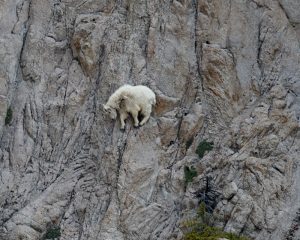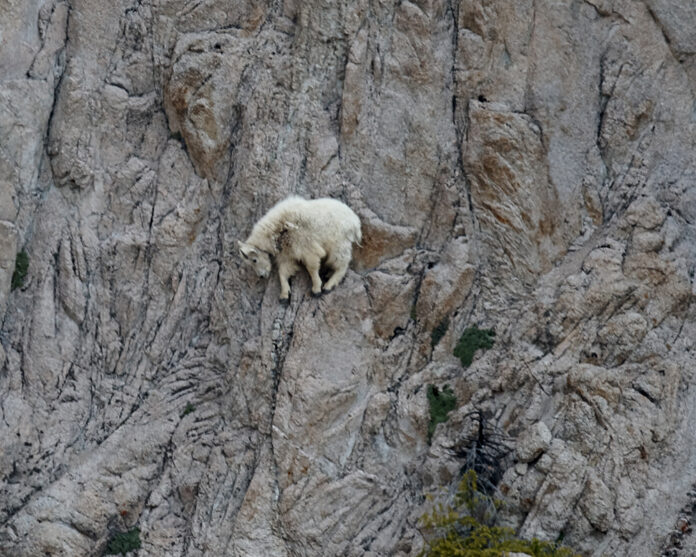
After years of seeking out and documenting a most noble beast, “Observing The Mountain Goat” premiers on Friday, July 5, 2019, at MESH Gallery at Heritage Hall in Ketchum.
Jeffrey H. Lubeck’s images and Nappy Neaman’s narrative for “Observing The Mountain Goat” will be available to all who attend the Sun Valley Gallery Association’s Gallery Walk event.
“Jeff and I are presenting something that is years in the making,” says Neaman. “The mountain goat is unique to North America. It lives only in the highest elevations of the Cascade and Rocky Mountain ranges, and the Wood River Valley is its southernmost native habitat.”
Lubeck is a longtime admirer of Neaman’s efforts related to the mountain goat.
“Nappy presents a compelling story on the topic of mountain goats with unparalleled insight, which engages the audience like no other,” says Lubeck. “Years ago we discussed the idea of attempting to add images that equal the words. While the idea sounds nice, the effort involved to accomplish such a result is exceptionally demanding.”
Mountain goats are isolationists; they do not lend themselves to domestication in any form. They also tend to live in the higher and more rugged elevations of their habitat.
For those that live in or visit the Wood River Valley, the mountain goat resides only a few miles from the center of town. There are many viewing points that offer the ability to see mountain goats at a distance. Viewing up close without disturbing the mountain goats is an entirely different proposition.
Getting up close enough to capture high-quality images involves dealing with a variety of challenges. Some combination of cross-country travel, rock scrambling, climbing, patience, an understanding of the daily habits of a mountain goat, superior photographic gear, the ability to carry up to 50 pounds of photographic gear, the ability to shoot a fast-moving subject, light of day and its angle, is always involved. And then there is the aspect of luck.
Over the past number of years, the team of Lubeck, Neaman and Crist Cook have ventured into the backcountry before sunrise or during the last rays of sun in the day to capture images of mountain goats.
“Perhaps our biggest challenge is that all three of us are lovers of wildlife, and on a photo shoot, I learned from Jeff you need to be an active participant, performing a particular role, and not a fan observing the action,” says Cook. “When spotting with binoculars or a scope, and saying with excitement, Oh my goodness, there is a mom and a one-week-old baby over there, does not help the photographer establish the ‘there’ for an animal that is up to a mile away and on the move.”
Because the team can encounter animals anywhere from 50 feet to a mile away, they bring photographic gear for all possible conditions. Lubeck uses a variety of photographic gear. For any wildlife photograph that is close to midrange, and all landscape shots, Lubeck uses Phase One gear. “It sets the standard and has delivered the very best possible results,” says Lubeck. “But this gear is big and heavy.”
For long range and ultra-long range, Lubeck uses Nikon.
“While it is easy to question your sanity while carrying a couple of Nikon 850 cameras attached to a 70-200mm and an 800-100mm lens as you gain 3,000 vertical feet before you can take your first shot, it is worth all the strain if you get the shot desired,” said Lubeck.
“Our goal of having images to provide visual context alongside the narrative about the life of a mountain goat in their native habitat has been met,” says Neaman. “I have waited 30 years for that condition and what we have to display is exciting.”
Jay Hilton is an aficionado of MESH Gallery and mountain goats.



